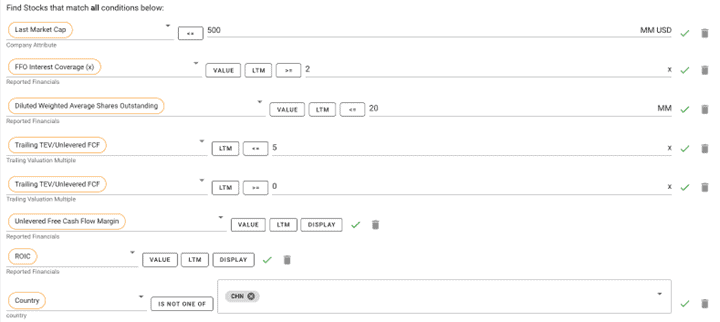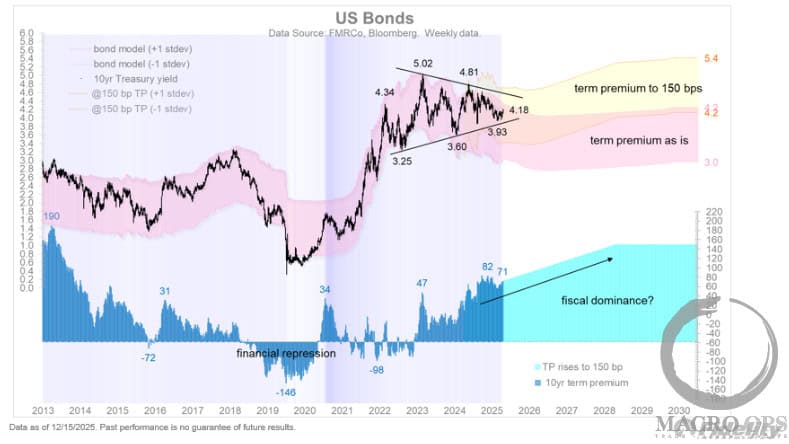We analyzed every Michael Burry write-up on Value Investors Club (VIC) to break down his investment strategy and learn how he dissects stocks.
The following are Burry’s five factors for approaching potential investments. He looks for:
- Small and micro-cap companies that are illiquid
- Downside protection
- Low share counts
- Value on an absolute basis
- Unrestricted parameters
Let’s get after it.
Michael Burry Prefers Small & Micro-Cap Stocks That Are Illiquid
Burry loves small and micro-cap stocks. You can see the market caps of each stock he wrote about on VIC below:
- Huttig Building Products (HBP): $90M
- ValueClick, Inc. (VCLK): $125M
- GTSI Corp (GTSI): $40M
- Quipp, Inc. (QUIP): $38M
- Wellsford Real Properties (WRP): $139M
- Pillowtex (PWTX): $64M
- Industrias Bachoco (IBA): $426M
His seven ideas had an average market cap of $132M, the largest being his latest idea: IBA at $426M.
Burry prefers microcaps because they’re one of the least fished areas of the market. Most investors ignore them for a few reasons.
First, microcaps are often illiquid. There aren’t many shares traded so it’s difficult to build a position in them without affecting the stock price and it’s even harder to quickly exit them. They are basically quasi-private market investments.
Second, micro-cap stocks have a sketchy reputation. They’re like the Red Light District of public markets filled with frauds, inept management teams, and businesses that make you wonder why they’re even public.
However, there’s tremendous alpha in highly illiquid and micro-cap stocks for those willing to dumpster dive.
All else equal, less liquid stocks trade at lower cash flow multiples than their more liquid peers. This makes sense as investors value the ability to quickly enter/exit larger, more liquid securities.
You’re basically buying the “same” cash flows for cheaper.
So what’s driving these excess returns? Mean reversion.
We know stocks move in and out of favor. Liquidity works the same way. Ibbotson found that stocks mean reverted from low to high liquidity. The more liquid a stock gets, the more valuable it becomes to other investors. Higher liquidity makes it easier for investors to buy the stock, increasing the share price and valuation multiple times.
Roger Ibbotson found that the most illiquid stocks generate the highest market returns. From 1980 – 2013, Low Liquidity stocks generated a 15.57% ~4% higher than the Russell 2000s 11.66% CAGR.
The results were even better when Ibbotson combined low liquidity with micro market caps. From 1972 – 2013, the least liquid and smallest market capitalization companies generated a 16.30% CAGR. Large, highly liquid stocks posted only a 9% CAGR during that time.
But once you add a value filter, the results get silly. Ibbotson found that the least liquid, most “value-based” stocks returned 19.3% annually from 1972 – 2013.
Low liquidity + cheap price + small market cap = excess returns
Burry loves odd-ball stocks or “roadkill,” as he said in his MSN Money articles. No better place to find oddball companies than micro-cap land.
Downside Protection Is Key
Burry focused first on downside protection. He wanted to know how much he could lose if he was wrong. If Burry’s analysis proved correct, the upside would take care of itself.
Significant losses destroy the “magic” of compound interest. For example, a 50% decline in a stock requires a 100% gain to break even. And a 70% decline requires a 233% return to break even. Minimizing our losses prevents us from needing mega 200%+ winners to break even.
This might not seem like a big deal, but let’s use an example of an investor with a $10M fund. Suppose the investor returns 20% per year for the first four years but suffers a 75% drawdown in year five.
The math leads to a loss of $4.8M over the five years and an annualized return of -10%. All from one significant drawdown.
Downside protection is critical because it protects long-term track records from the risk of one bad year blowing up years (if not decades) of success.
Every trading GOAT emphasizes risk management over anything else because they know that lost dollars are more challenging to recapture than new dollars are to make.
Traders like Druckenmiller or Soros didn’t just trade off fundamentals. They used stop-losses to protect their downside and reduce risk, too. Burry uses a cheap purchase price and strong balance sheets to accomplish the same thing as a bottoms-up fundamental investor.
Let’s check out a few examples from his write-ups, starting with VCLK. Burry starts the write-up discussing downside protection (emphasis added):
“[Here’s an] Internet asset play trading below cash and equivalents, with no debt and with an expectation of positive operating earnings by the end of the next fiscal first quarter.”
Notice how Burry initially outlines the downside protection (“asset play trading below cash”) and then provides reasons why the stock should inflect higher (“expectation of positive operating earnings by the end of next fiscal first quarter”).
GTSI is another example of Burry’s obsession with downside protection. Here’s how he started his write-up (emphasis added):
“[GTSI is] a debt-free net net stock, now showing earnings growth and consistency for the first time.”
Do you see the pattern? Burry starts with the downside (i.e., How much can I lose, if any, if I’m wrong?) and then explains why the stock price should trade higher in the future.
Another example is QUIP. The company makes, sells, and installs post-press material handling equipment for newspapers. QUIP traded for <2x EV/FCF when Burry published the write-up.
This was a business that gushed cash with little capex requirements to sustain that cash generation. Check out Burry’s thoughts below (emphasis added):
“Free cash generation has been great relative to market cap. Total cap ex the last three years was only about $1 million, and Total operating cash flows the last three years were $14.4 million. With EV at just over $20 million, that’s pretty cheap. Two years ago, the company paid a $7/share special dividend because of the cash build up …
So you have a stock in a company that generates lots of cash and does not reinvest it in the business to any great length (R&D at 2% of sales, cap ex at just a few hundred thousand – nearly all maintenance). So every few years a sizable cash and investment portfolio accumulates.”
In this example, Burry’s protection is a business that generates enough cash to pay special dividends and grow an investment portfolio without needing sizable R&D capex to maintain its FCF.
We also see Burry’s emphasis on downside protection in his WRP write-up from June 2001. Here’s how he starts the thesis (emphasis added):
“WRP is an opportunity to buy real estate at as little as 50 cents on the dollar (and at most 61 cents on the dollar), with a plan for value realization in place and virtually no downside.”
Notice the last part … “And virtually no downside.”
It feels weird focusing so much on the downside when we spent the last two years obsessing over Blue Sky growth scenarios where nothing could go wrong.
But Burry knows that the key to outperformance is not losing money. He says something like this in one of his investor letters (I’m paraphrasing):
“Any alpha that this fund generates will be the result of our obsession with reducing our downside risks.”
Burry obsessed over the downside because he understood that one awful year could ruin a lifetime of outperformance. He paid cheap prices and bought companies with solid balance sheets.
Burry Likes Low Share Counts
Check out the share counts from each of his seven write-ups:
- Huttig Building Products (HBP): ~21M
- ValueClick, Inc. (VCLK): ~28M
- GTSI Corp (GTSI): ~8M
- Quipp, Inc. (QUIP): ~2M
- Wellsford Real Properties (WRP): ~8M
- Pillowtex (PWTX): ~20M
- Industrias Bachoco (IBA): ~50M
Except for IBA, Burry’s companies averaged a share count of ~14.5M shares.
Burry never explicitly mentions low share counts as an investment criterion, but it’s clear that he values it. There are a few reasons why:
- Management cares about minority shareholders (common stockholders)
This indicates that management is focused on creating value for all shareholders, not just a select few. This helps align the interests of management and shareholders and can lead to better decision-making and performance for the company.
- Management doesn’t view its shares as cheap currency
Management not viewing their shares as cheap money means they are not using them to overpay for acquisitions or pay employees, which can dilute the value of existing shareholders’ holdings. This can help to protect the value of shareholders’ investments and can also provide more transparency and accountability for management’s actions
- There’s a lower probability of dilution
A lower probability of dilution means less risk that the value of shareholders’ investments will be diluted by new share issuances. This helps to protect the value of shareholders’ investments and provides more stability and predictability for the company’s stock price.
- The company is probably more illiquid than other stocks
Illiquid companies are less volatile than other stocks. They also provide opportunities for investors to buy or sell shares at attractive prices. This can provide investors more stability and predictability and opportunities to generate returns from buying and selling the stock.
Buy The Absolute Cheapest Stocks You Can Find
Burry bought absolutely cheap stocks versus the conventional relatively cheap bet.
Buying absolutely cheap stocks means you don’t care about relative valuations. You assess each stock on its own merit. The only yardstick for “cheapness” is the price you’re willing to pay to generate your desired rate of return.
This is important because the market often over-values companies or entire industries. Investors buying relatively cheap stocks will automatically pay higher prices. A company trading at 25x earnings looks relatively cheap if the rest of the industry trades at 35x. Absolute cheapness protects investors from falling into such traps.
Here are some examples from Burry’s write-ups.
IBA was Mexico’s leading poultry producer. It boasted industry-leading margins and returns on equity. Yet it traded at 2x ex-cash earnings and 0.5x P/B. Peers commanded a 3-5x higher valuation. But it didn’t matter because IBA was absolutely cheap.
There were a couple of reasons for the discount.
First, it was a Mexican company trading on the local Mexican exchange. This automatically gives it a valuation haircut against US peers, which Burry acknowledged (emphasis added):
“Multiples in Mexico do tend to be substantially lower than multiples in the US though, so part of it is a country discount, no doubt. After all, how many investors out there are just ignoring this idea because it is Mexican? Many many of my circle of contacts have done so.”
The second reason it was so cheap was that nobody looked for ideas in Mexico. Read that last part of Burry’s above quote again … “How many investors out there are just ignoring this idea because it is Mexican? Many of my circle of contacts have done so.”
You couldn’t get accurate financial data for the company, either. Burry had to email IBA’s Investor Relations team, which then emailed Burry earnings reports and press releases.
Another example of Burry’s quest for absolute cheapness was Pillowtex (PWTX). PWTX made (you guessed it) pillows, bed sheets, and mattresses.
The company traded at distressed prices as it recently emerged from bankruptcy. Burry’s summary (emphasis added):
“So based on POR projections, the stock is trading at less than 3X 2003 earnings, less than 2X 2004 earnings, and at about 1.5X free projected free cash flow. Post-reorg/fresh start book value is around 200 mill, so at 64 mill we’re at .32X book and at around 6% of sales.”
Check out these bargain prices:
- 3x 2003 earnings
- 5x 2003 FCF
- 32x Book Value
- 06x Sales
Of course, buying at basement prices doesn’t always protect you from losing money. PWTX eventually closed for good after it couldn’t offshore it’s manufacturing quickly enough, letting its largest customer (Walmart) move to a cheaper manufacturer.
The lesson is that each idea was cheap because it was absolutely cheap. Not because they were relatively inexpensive versus a basket of more expensive options.
Michael Burry on Value Investing
“I go where I can find the most value. Currently, that happens to be in small caps and illiquid securities … I have a list of roughly 80 large cap names that I believe are great franchises that I’d love to own. But the prices at which I’d love to own them are so much lower than today’s prices it would make you laugh.” – Burry’s Investor Letters
Burry has no restrictions on where he finds value. He’s not boxed into a style bucket. Each VIC write-up displayed Burry’s unique ability to fish where others weren’t in search of the best value.
- Huttig Building Products (HBP): A low-margin, recently spun-off home-building supplier with terrible backward-looking financials.
- ValueClick, Inc. (VCLK): A net-net micro-cap advertising stock that hadn’t turned a profit.
- GTSI Corp (GTSI): A negative EV micro-cap distributor selling outdated equipment to the US military and IRS with seasonal revenues and profits.
- Quipp, Inc. (QUIP): A highly illiquid micro-cap company selling small parts to larger finished newspaper goods with only 2M shares outstanding.
- Wellsford Real Properties (WRP): SOTP real estate play selling at $0.50 on the dollar.
- Pillowtex (PWTX): Post-bankruptcy pillows and bedsheets producer with labor union and balance sheet issues.
- Industrias Bachoco (IBA): Mexico’s leading poultry producer with 80% of the stock family-controlled.
The lesson here is that Burry lets absolute value determine where he finds ideas. He doesn’t restrict himself to one country, industry, market capitalization, or business model.
This approach allows him to find the best investment opportunities, regardless of location or industry. By embracing this philosophy, investors can open themselves up to a broader range of options and improve their returns.
We practice this at Macro Ops. We’ll go anywhere to find valuable ideas. Sometimes that means fishing in Poland, diving into the UK’s micro-cap scene, or scavenging Mexico’s local stock market.
The more rocks we turn over, the greater our chances of finding an excellent company for cheap.
Recap: How To Invest Like Michael Burry
There are five things we can do to invest like The Big Short:
- Hunt in the small/micro-cap space (<$300M market cap)
- Focus first on downside protection
- Invest in businesses with low share counts
- Buy the absolute cheapest stocks regardless of relative valuation
- Remove any restrictions on where to find ideas
To get you started, I’ve created a Michael Burry Stock Screener via TIKR. You can check out TIKR here if you’re interested (disclosure: they sponsor my podcast).
Here’s what our Burry screen looks like:

Here’s the exciting part … The screen produces 868 companies. There’s a ton of rocks to turn over, and that’s the point.
Great ideas aren’t usually hidden in plain sight. It requires loads of time to turn over things that look like roadkill. Stocks that make most people shriek, “Ick! I’d never touch that thing!”
That’s what made Burry great. He turned over rocks in places other investors didn’t dare venture. He bought ugly, roadkill-looking businesses at distressed prices. And he sold them when they looked a little less roadkill-y.
Michael Burry is known for his one bet on the housing market. But he’s a much more complex investor than that one bet. He’s rooted in Ben Graham fundamentals with an eye for ridiculous value. Investors can learn a ton from reading Burry’s past ideas. I hope that you learned something from this, too.








